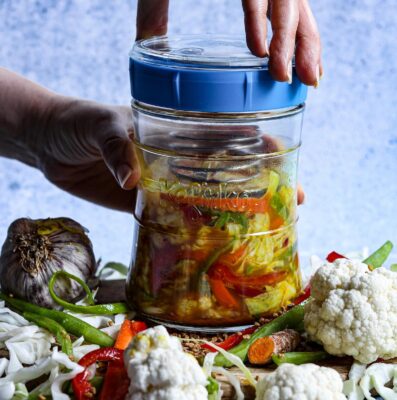The Ultimate Guide to Water Kefir

Water kefir is a fermented beverage made by culturing water with water kefir grains. These grains are a combination of bacteria and yeast that produce a lightly carbonated, probiotic-rich drink. Easy to prepare and customizable with various flavors, water kefir is gaining popularity for its health benefits and refreshing taste. Understanding the differences between fresh and dehydrated kefir grains, along with some essential brewing tips, can ensure your kefir succeeds every time.
Fresh vs. Dehydrated Kefir Grains: Key Differences

Time of Activation:
Which One to Choose:
The choice between fresh and dehydrated grains depends on accessibility and convenience.
Fresh grains are often preferred by regular brewers for their immediate usability. Fresh grains are also only suitable for short-distance transport.
Dehydrated grains are more durable and have a longer shelf life, making them ideal for those who may not brew frequently or wish to store them for future use. They are also suitable for long-distance transport.
Dehydrated grains can be kept for months in a cool, dry place, whereas fresh grains need regular maintenance and can be stored in a sugar-water solution in the fridge for a short period. If you want to store fresh grains for a longer period of time, you need to change the water and sugar solution monthly.
Tips for Making Water Kefir

- Quality Ingredients. Use high-quality, non-chlorinated water to avoid harming the kefir grains. Choose sugars that dissolve easily and provide nutrients for the grains, like organic cane sugar and rapadura
- Temperature Control: Keep the fermenting water kefir in a warm, stable environment (23-27 °C) to ensure proper fermentation.
- Maintenance of Grains: Rinse the kefir grains between batches with non-chlorinated water. Occasionally rest the grains in a sugar-water solution in the fridge if they become overworked.
- Safety: Ensure all equipment is clean to avoid contamination. Taste your water kefir regularly to ensure it hasn’t gone bad (it should taste slightly sweet and tangy).
Don’t miss out on the new content about fermenting!
Subscribe to Kefirko newsletter
Benefits of Drinking Water Kefir in the Summer

- Hydration: Water kefir is a hydrating beverage, making it an excellent choice to help stay hydrated in hot weather.
- Refreshment: It has a light, effervescent quality that is refreshing and satisfying as a cold drink.
- Probiotics: Probiotics can aid in digestion, which is especially beneficial in the summer when diets may include more raw foods and barbecues.
- Natural Energy Boost: The natural sugars and fermentation process can provide a gentle energy boost without the crash associated with sugary sodas or energy drinks.
- Customizable Flavors: Summer fruits and herbs can be used to flavor water kefir, making it a versatile and enjoyable beverage.

Troubleshooting

- Kefir is Not Fizzy:
Possible Causes: Short fermentation time, not enough sugar, or too cold temperatures.
Solutions: Extend fermentation time, ensure the right amount of sugar, and keep the jar in a warmer place. Additionally, secure the lid tightly to keep CO2 from escaping the jar. - Kefir is Too Sweet:
Possible Causes: Insufficient fermentation time.
Solutions: Allow it to ferment for a longer period. - Kefir is Too Sour:
Possible Causes: Over-fermentation.
Solutions: Shorten the fermentation period. The ideal time is 48 hours. The fermentation time also depends on the temperature in the room, the higher it is, the faster the fermentation will take place. Adjust the fermentation time to the conditions. Try kefir every 12 hours. - Grains Aren’t Growing:
Possible Causes: Lack of minerals, poor water quality, or insufficient sugar.
Solutions: Use high mineral sugar like Rapadura, ensure good quality water, and use the appropriate amount of sugar. To ensure a sufficiently low pH, add a slice of organic lemon - White or Cloudy Substance on Grains:
Possible Causes: Yeast build-up or contamination.
Solutions: Rinse grains thoroughly and consider a brief rest period in clean water. - Brown strains flowing on top of the kefir:
Possible Causes: The brown structures on top of the kefir are yeasts that are part of the kefir culture, so they are not harmful. The reason for the growth of these yeasts can be too high temperature, too much air during fermentation or too many grains and not enough water.
Solutions: Ensure the proper fermentation temperature (23-27 °C), close the lid and use the proper ratio of grains to water.
Recommended products from this blog:
-
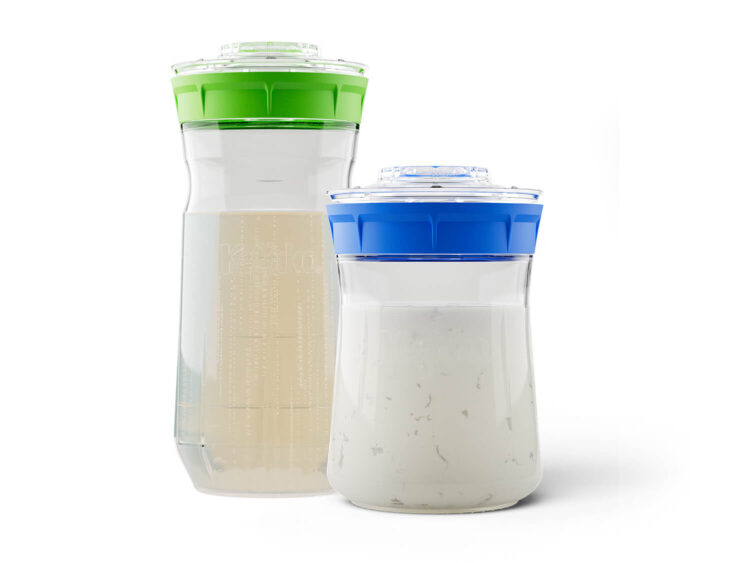
Kefir Fermenter
32.45 € - 35.99 €Rated 4.58 out of 5Select options This product has multiple variants. The options may be chosen on the product page -
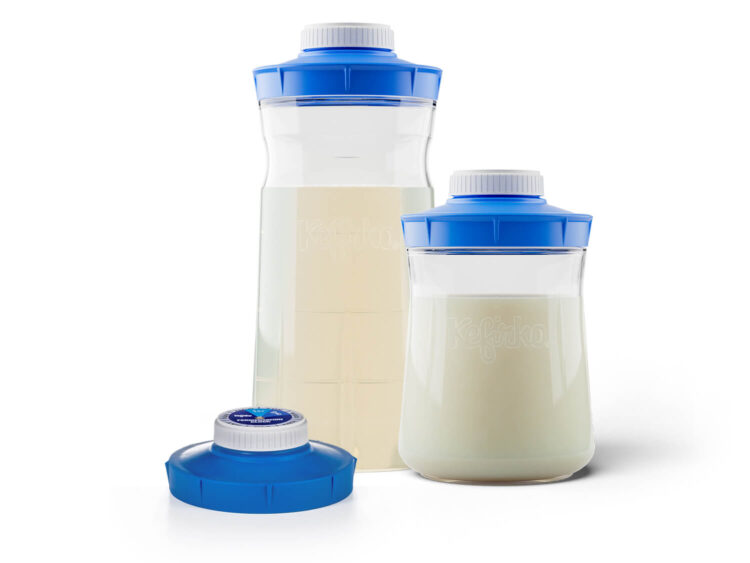
Second Fermentation
12.10 € - 20.60 €Rated 4.91 out of 5Select options This product has multiple variants. The options may be chosen on the product page -
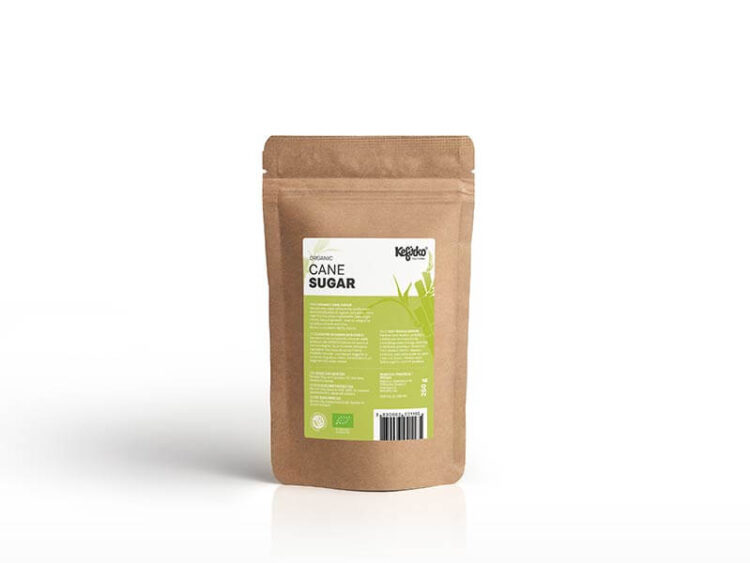
Organic Cane Sugar, 250g
2.90 €Rated 5.00 out of 5 -
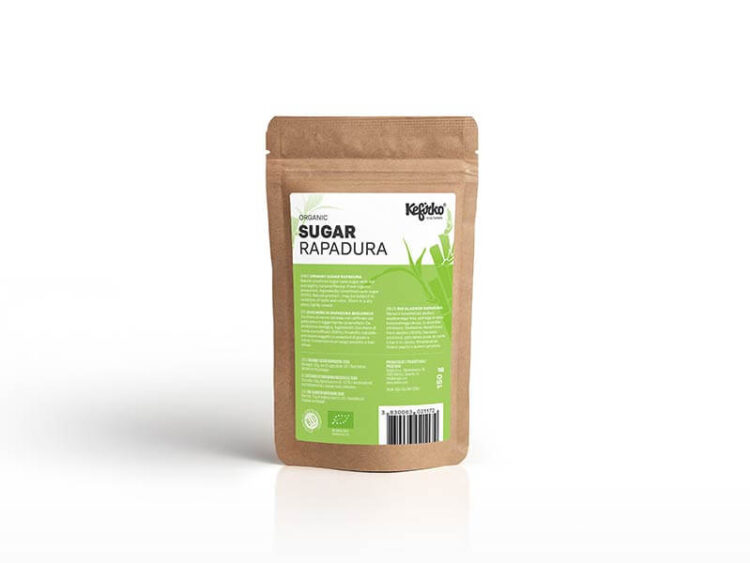
Organic Sugar Rapadura, 150g
3.90 € -
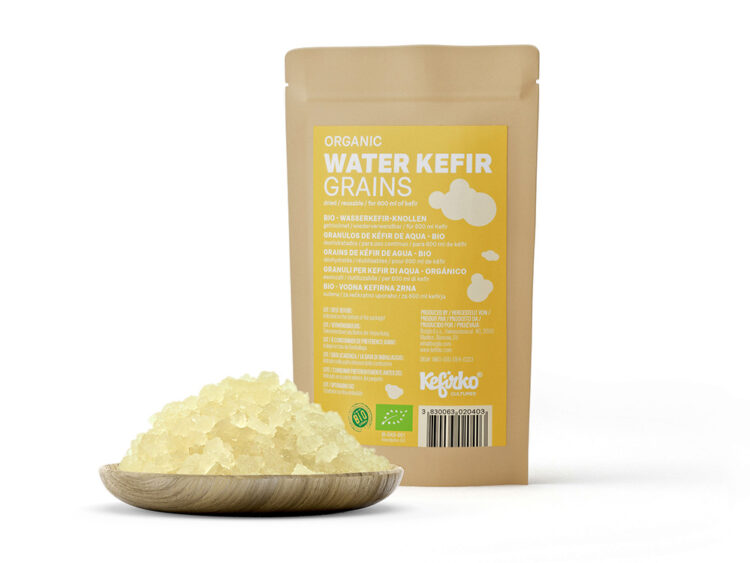
ORGANIC WATER KEFIR GRAINS
5g (Dried) 13.90 €Rated 4.75 out of 5


